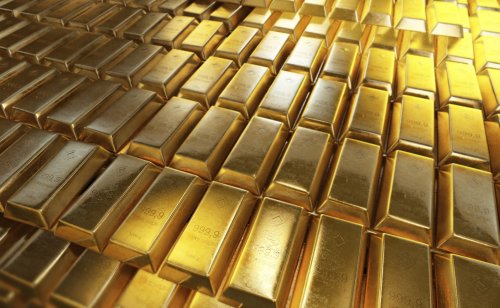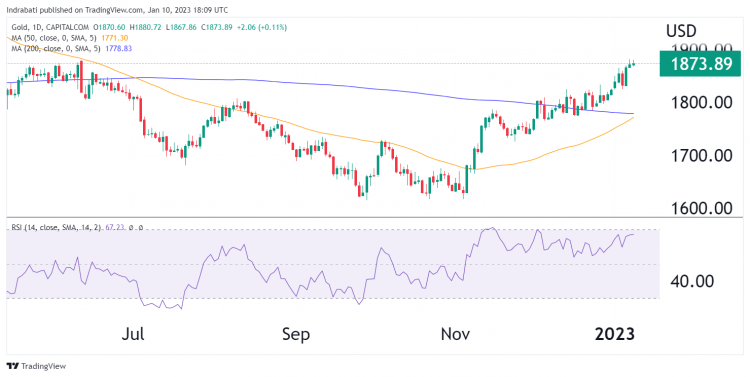China hoards gold in an effort to wean itself off the US dollar

China has recently considerably ramped up its gold imports, in an effort to diversify the People’s Bank of China’s (PBOC) holdings, as well as reduce their reliance on the US dollar (DXY). This has also been seen as a move to prepare for the country’s resurging industrial and manufacturing activity, especially when it comes to jewellery manufacturing.
This sudden rise in gold purchases happened in November 2022, following a three-year break by the PBOC. In November an extra 32 tonnes of gold was bought, on top of the usual monthly purchases, which was then followed by a further 30 tonnes in December, according to the World Gold Council.
Why is China increasing its gold purchases?
At the end of 2022, China’s official gold reserves totaled approximately 2,010 tonnes, which was an increase of about 3.2% from the end of October 2022, when reserves were about 1,948 tonnes. This boost in the last quarter of the year has taken China’s gold imports for the whole of 2022 to record levels.
Since the third quarter of 2022, about 400 tonnes of gold have been bought by mostly unnamed buyers, with only about a quarter of the transactions publicly and transparently being reported. This has gone a long way in helping boost gold prices in the last few months.
This had led to several speculations of a number of central banks being behind these purchases, with China and Russia being the potential forerunners. China’s role is now being confirmed following the release of specific amounts of gold it has purchased.
This may largely be due to China preparing itself to reduce its dependence on the US dollar, as its relations with the US deteriorate further, following a number of restrictions on Chinese semiconductor companies.
Furthermore, currently Chinese central bank reserves mostly consist of the US dollar, which could at any time be sanctioned, as has already been highlighted by the US sanctioning Russian central bank reserves.
This has added to the urgency of diversifying the PBOC’s reserves as fast as possible, with bullion being a good option, due to its relative ease of being converted into currency, both through traditional and underground means.
Although this increased buying by the central bank is not likely to help gold prices too much, it has definitely provided some welcome support, especially as gold has struggled with increasingly aggressive interest rate hikes by the US Federal Reserve recently.
This has also added to the support the precious metal has received through a weakening US dollar. China could also be stockpiling gold due to the possibility of further international restrictions down the road, due to its allegedly uncontrolled rise in COVID-19 cases.
If the country does see more restrictions, it could result in a significant loss of revenue from tourism as well as other industrial and manufacturing activity, in which case gold reserves may come in handy to keep the economy relatively stable.
What is your sentiment on Gold?
Vote to see Traders sentiment!
At the time of writing, gold was trading at about $1,877 per troy ounce, having increased about 0.3% on Tuesday. The precious metal also surged about 8.9% since the end of November 2022 as well as approximately 16% since the beginning of November 2022.
However, it was still trading around 9.4% lower from its early-March 2022 highs, at the beginning of the Russia-Ukraine conflict, which boosted gold prices due to geopolitical risk and rising safe-haven demand.
The next resistance level is likely to be about $1,900 per troy ounce, last seen on May 5 2022, followed by $1,930 per troy ounce, last crossed on April 25 2022. The next support level, however, could possibly be about $1,800, last crossed on December 28, followed by about $1,750 per troy ounce, last crossed on November 30.
Gold prices are currently trading near 8-month highs
 China has been buying increasing amounts of gold in the past few months – Credit: TradingView
China has been buying increasing amounts of gold in the past few months – Credit: TradingView What is the outlook for gold?
According to MKS PAMP Group gold 2023 forecast, the precious metal is likely to surge in this new year, largely driven by decreasing interest rate hikes by the US Federal Reserve, as well as increased recession and stagflation risks.
However a rebounding US dollar might put a cap on gains somewhat. Inflation is also expected to slow down somewhat, but is still likely to remain above target this year, which may reduce safe-haven demand for gold a little.
According to this Heraeus Precious Metals report, gold prices in 2023 also depend on whether other currencies, such as the euro strengthen or not, as if they do, gold may see fewer gains. Furthermore, the progress of the Russia-Ukraine war also has to be closely monitored, as if this deteriorates in the coming few months, global uncertainty and the energy crisis is likely to worsen. This may cause investors to once again seek refuge in gold and other precious metals, leading to a boost in prices.
Related reading
Rate this article
[ad_2]
Source link


